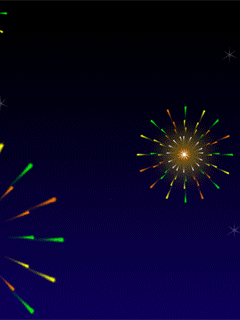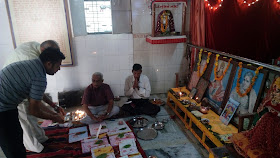Sardar Vallabhbhai Patel Jayanti Date
Sardar Vallabhbhai Patel Jayanti is Celebrated on 31st October every year.Sardar Vallabhbhai Patel is known as "Iron Man".Here is Some Information about Sardar Vallabhbhai Patel.
About Sardar Vallabhbhai Patel
Birth Date: 31st October 1875
Born Place: Nadiad ,Gujarat, India
Father: Jhaverbhai (farmer)
Mother: Laad Bai
Spouse: Jhaverba
Died: December 15, 1950
Sardar
Vallabhbhai Patel is Born in Nadiad Gujarat at 31 October 1875 in
India.His Father's name is Zaverbhgai and Mother's name is Laadbai.His
Father is Small Farmer.His father, Zaverbhai, had served in the army of
Jhansi ki Rani, and his mother, Ladbai, was a deeply religious woman.
Vallabhbhai's
initial schooling was in Gujarati. His brother Vithalbhai, after
completing middle school, had enrolled himself in English tutorial
classes in a nearby town. Vallabhbhai followed suit. Vallabhbhai's
superior organizational skills became evident while he was in high
school at Petlad when he coordinated the entire campaign for a poor
teacher who he thought deserved a seat on the local municipal committee.
Vallabhbhai persuaded his fellow students to work for the campaign. So
impressively was the campaign handled that the teacher was elected over
the rich local businessman. Vallabhbhai matriculated from Nadiad High
School in 1897.
Vallabhbhai
was married to Zaverbai in 1891. The couple had two children-a daughter
Maniben, born in April of 1904, and a son Dayabhai, born in November of
1905. Zaverbai died in January of 1909. Vallabhbhai sailed for England
in August of 1910 to study law. He qualified as a barrister in 1913 and
returned to India to a lucrative practice in Ahmedabad. He joined the
Gujarat Club and took to western dressing and a comfortable lifestyle.
Gandhiji
started coming to the Gujarat Club to give lectures. He came again and
again, propagating the idea of his newly wielded weapon of "satyagraha"
or truth force. Vallabhbhai was impressed with Gandhiji and slowly began
to adopt his view. The relationship between Gandhiji and Vallabhbhai
was concretely defined when Gandhiji was elected the President of the
Gujarat Sabha and Vallabhbhai the Secretary, in 1917. It was a
relationship of a guru (teacher) and disciple.
Vallabhbhai
wanted to become a barrister. To realize this ambition he had to go to
England. But he did not have the financial means to even join a college
India. In those days a candidate could study in private and sit for an
examination in Law. Sardar Vallabh Bhai Patel borrowed books from a
lawyer of his acquaintance and studied at home. Occasionally he attended
courts of law and listened attentively to the arguments of lawyer.
Vallabhbhai passed the Law examination with flying colours.
Sardar
Vallabhbhai Patel started his Law practice in Godhra. Soon his practice
flourished. He got married to Jhaberaba. In 1904, he got a baby
daughter Maniben, and in 1905 his son Dahyabhai was born. Vallabhbhai
sent his elder brother Vitthalbhai, who himself was a lawyer, to England
for higher studies in Law. Patel was only thirty-three years old when
his wife died. He did not wish to marry again. After his brother's
return, Vallabhbhai went to England. He studied with single-minded
devotion and stood first in the Barrister-at-Law Examination.

Sardar
Patel returned to India in 1913 and started his practice in Ahmedabad.
Soon he became popular. At the urging of his friends, Patel contested
and won elections to become the sanitation commissioner of Ahmedabad in
1917. Sardar Patel was deeply impressed by Gandhiji's success in
Champaran Satyagraha. In 1918, there was a drought in the Kheda division
of Gujarat. Peasants asked for relief from the high rate of taxes but
the British government refused. Gandhiji took up peasants cause but
could not devote his full time in Kheda. He was looking for someone who
could lead the struggle in his absence. At this point Sardar Patel
volunteered to come forward and lead the struggle. He gave up his
lucrative legal practice and entered public life.
Vallabhbhai
successfully led peasants revolt in Kheda and the revolt ended in 1919
when the British government agreed to suspend collection of revenue and
roll back the rates. Kheda Satyagraha turned Vallabhbhai Patel into a
national hero. Vallabhbhai supported Gandhi's Non-Cooperation Movement,
and as president of the Gujarat Congress, helped in organizing bonfires
of British goods in Ahmedabad. He gave up his English clothes and
started wearing Khadi. Sardar Vallabh Bhai Patel was elected Ahmedabad's
municipal president in 1922, 1924 and 1927. During his terms, Ahmedabad
was extended a major supply of electricity and underwent major
education reforms. Drainage and sanitation systems were extended over
all the city.
In
1928, Bardoli Taluka in Gujarat suffered from floods and famine. In
this hour of distress the British government raised the revenue taxes by
thirty percent. Sardar Patel took up cudgels on behalf of the farmers
and appealed to the Governor to reduce the taxes. The Governor refused
and the government even announced the date of the collection of the
taxes. Sardar Patel organized the farmers and told them not to pay even a
single pie of tax. The government tried to repress the revolt but
ultimately bowed before Vallabhbhai Patel. It was during the struggle
and after the victory in Bardoli that caused intense excitement across
India, that Patel was increasingly addressed by his colleagues and
followers as Sardar.

Disobedience
Movement in 1930. After the signing of Gandhi-Irwin pact in 1931,
Sardar Patel was released and he was elected Congress president for its
1931 session in Karachi. Upon the failure of the Round Table Conference
in London, Gandhiji and Sardar Patel were arrested in January 1932 and
imprisoned in the Yeravada Central Jail. During this term of
imprisonment, Sardar Patel and Mahatma Gandhi grew close to one another,
and the two developed a close bond of affection, trust, and frankness
without reserve. Sardar Patel was finally released in July 1934.
In
August 1942, the Congress launched the Quit India Movement. The
government jailed all the important leaders of the Congress, including
Vallabhai Patel. All the leaders were released after three years. After
achieving independence on 15th of August 1947, Pandit Jawaharlal Nehru
became the first Prime Minister of independent India and Sardar Patel
became the Deputy Prime Minister. He was in charge of Home Affairs,
Information and Broadcasting and the Ministry of States.
There
were 565 princely states in India at that time. Some of the Maharajas
and Nawabs who ruled over these were sensible and patriotic. But most of
them were drunk with wealth and power. They were dreaming of becoming
independent rulers once the British quit India. They argued that the
government of free India should treat them as equals. Some of them went
to the extent of planning to send their representatives to the United
Nations Organization. Patel invoked the patriotism of India's monarchs,
asking them to join in the freedom of their nation and act as
responsible rulers who cared about the future of their people. He
persuaded the princes of 565 states of the impossibility of independence
from the Indian republic, especially in the presence of growing
opposition from their subjects. With great wisdom and political
foresight, he consolidated the small kingdoms. The public was with him.
He tackled the Nizam of Hyderabad and the Nawab of Junagarh who
initially did not want to join India. Sardar Patel's untiring efforts
towards the unity of the country brought success. He united a scattered
nation without much bloodshed. Due to the achievement of this massive
task, Sardar Patel got the title of 'Iron Man'. Sardar Patel died of
cardiac arrest on December 15, 1950. For his services to the nation
Sardar Patel was conferred with Bharat Ratna in 1991.
Sardar Jayanti Whatsapp Status-Facebook Sms
Faith is of no Avail in absence of strenth Faith and strength, both are essential to accomplish any great work.
It is the prime responsibility of every citizen to feel that his country is free and to defend its freedom is his duty.
Even if we lose the wealth of thousands, and our life is sacrificed, we should keep smiling and be cheerful keeping our faith in God and Truth.
My only desire is that India should be a good producer and no one should be hungry, shedding tears for food in the country.
Every citizen of India must remember that he is an Indian and he has every right in this country but with certain duties.
Sardar Vallabhbhai Patel Jayanti Greetings






















































